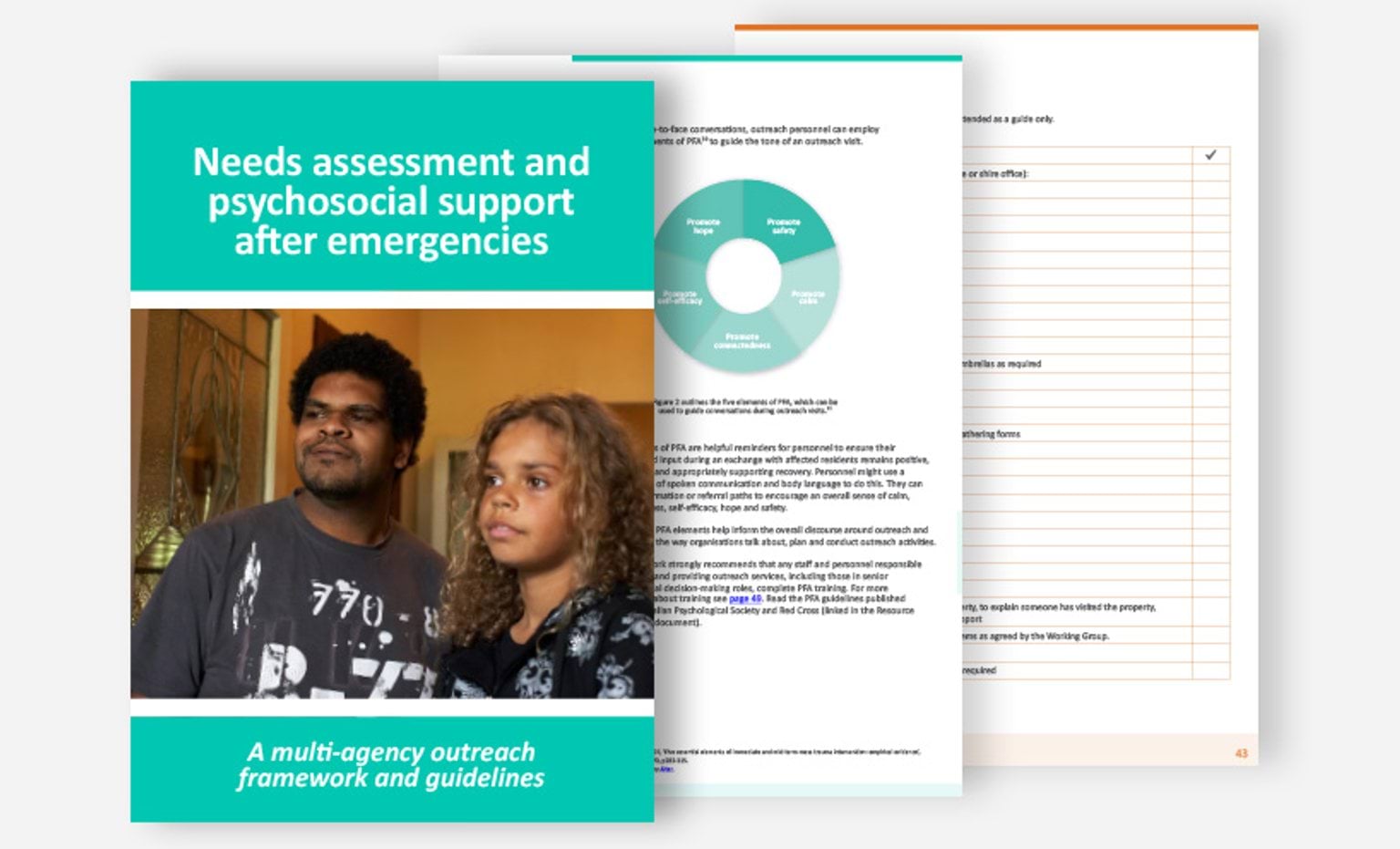
Link to resource
This resource is hosted on the Australian Red Cross website(opens in a new window).
PDF DOC | 1.62MB
The Australian Red Cross has a range of useful emergency management resources. The resources can help prepare for, respond to, and recover from disasters.
Resources are available for organisations, communities, parents and caregivers, and teachers.
You can download many resources from the Australian Red Cross website. These include emergency preparedness videos and information flyers in local community languages.
This emergency management resource is part of the Australian Red Cross collection.
Details
| Title | Needs Assessment and Psychosocial Support after Emergencies: A Multi-Agency Outreach Framework and Guidelines |
|---|---|
| Owner | Australian Red Cross |
| Date last updated | May 2016 |
| Resource type | Framework |
What is this about?
This framework and guidelines on needs assessment and psychological support after emergencies help agencies ensure outreach visits after emergencies are coordinated and holistic.
Who is this resource for?
- State Government
- Local Government
- Community Service Organisation
- Non Government Organisation
- Community Recovery Committees
Table of contents
Part 1 - Outreach framework
- What is outreach?
- This framework
- Improving outreach in Victoria – coordination and psychosocial support
- Outreach and the relationship to impact assessment
- Outreach and the National Principles for Disaster Recovery Psychosocial considerations in outreach
- Outreach and delivery of Psychological First Aid
- Outreach and the ‘Propeller’ model
- Outreach process
Part 2- Outreach guidelines
-
Guiding principles
-
People, roles and responsibilities
- Lead agency
- Outreach Working Group
- Outreach Coordinator
- Outreach Teams
-
Outreach Process
- Working Group convenes
- Lead Agency assumes role or is appointed
- Outreach Coordinator assumes role or is appointed
- Plan outreach
- Conduct outreach
- Pass on referrals and share relevant information
- Follow up on referrals
- Disseminate reports and share findings
-
Important tips for conducting outreach
- Briefing and debriefing
- Code of Conduct
- Common outreach challenges Community input
- Conclusion of outreach
- Delivering information to affected people
- Equipment and supplies, outreach kits
- Information gathering and reporting
- Training
- Visiting affected properties and people
- Vulnerable or specific community groups
- Where and who to visit
Part 3 - Resources and references
- Resource table
- References
- Appendices
Updated